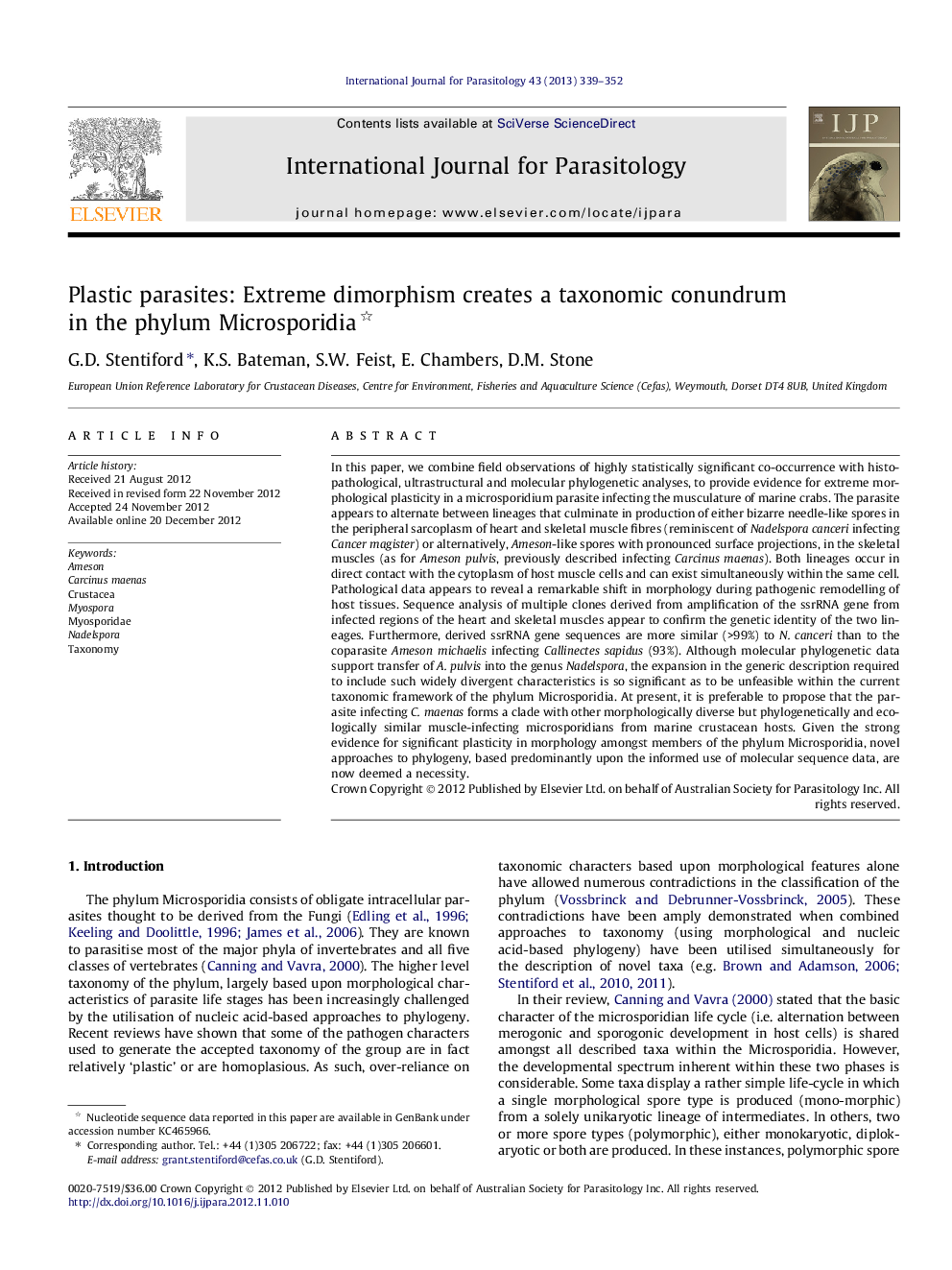| کد مقاله | کد نشریه | سال انتشار | مقاله انگلیسی | نسخه تمام متن |
|---|---|---|---|---|
| 2436197 | 1107288 | 2013 | 14 صفحه PDF | دانلود رایگان |

In this paper, we combine field observations of highly statistically significant co-occurrence with histopathological, ultrastructural and molecular phylogenetic analyses, to provide evidence for extreme morphological plasticity in a microsporidium parasite infecting the musculature of marine crabs. The parasite appears to alternate between lineages that culminate in production of either bizarre needle-like spores in the peripheral sarcoplasm of heart and skeletal muscle fibres (reminiscent of Nadelspora canceri infecting Cancer magister) or alternatively, Ameson-like spores with pronounced surface projections, in the skeletal muscles (as for Ameson pulvis, previously described infecting Carcinus maenas). Both lineages occur in direct contact with the cytoplasm of host muscle cells and can exist simultaneously within the same cell. Pathological data appears to reveal a remarkable shift in morphology during pathogenic remodelling of host tissues. Sequence analysis of multiple clones derived from amplification of the ssrRNA gene from infected regions of the heart and skeletal muscles appear to confirm the genetic identity of the two lineages. Furthermore, derived ssrRNA gene sequences are more similar (>99%) to N. canceri than to the coparasite Ameson michaelis infecting Callinectes sapidus (93%). Although molecular phylogenetic data support transfer of A. pulvis into the genus Nadelspora, the expansion in the generic description required to include such widely divergent characteristics is so significant as to be unfeasible within the current taxonomic framework of the phylum Microsporidia. At present, it is preferable to propose that the parasite infecting C. maenas forms a clade with other morphologically diverse but phylogenetically and ecologically similar muscle-infecting microsporidians from marine crustacean hosts. Given the strong evidence for significant plasticity in morphology amongst members of the phylum Microsporidia, novel approaches to phylogeny, based predominantly upon the informed use of molecular sequence data, are now deemed a necessity.
Figure optionsDownload high-quality image (232 K)Download as PowerPoint slideHighlights
► A new life cycle lineage for a century-old Microsporidian taxon is described.
► The new lineage displays extreme morphological variation from that published.
► Molecular phylogenetic data is utilised to demonstrate synonymy between life cycle variants.
► The new data presents a taxonomic conundrum that widely implicates other taxa within the Phylum.
Journal: International Journal for Parasitology - Volume 43, Issue 5, April 2013, Pages 339–352